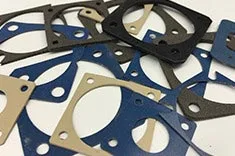EMI Shielding Products
- Custom Gasket Fabrication
- Connector Gaskets
- Bonded O Ring
- Custom Gaskets
- Conduct-O-Knit Knitted Wire Mesh
- Conduct-O-Seal Combo Gasket
- Conduct-O-Elastomer
- Conduct-O-Seal Oriented Wire in Silicone Gasket Material
- Conduct-O-Mesh Tape
- Conduct-O-Foam
- Conduct-O-Bond
- Optical Filters For Electronic Displays
- Shielded Vent Panels
- ESC Board Level Shielding
- 300 Series
Testing Standards to Determine EMI Shielding Effectiveness

With each year, the world is becoming more and more technologically advanced. While this has many advantages, one huge downside is electromagnetic interference (EMI). EMI is outside interference that can cause electronics to malfunction or work improperly. Devices must be designed with EMI shielding technology. Shielding EMI ensures that your products are safe.
Not all EMI shielding devices and materials are created equally. They have different levels of effectiveness. Effectiveness is measured by the amount of attenuation it achieves, which is how immune it is to external sources of EMI. Levels of EMI shielding effectiveness are determined by testing standards developed by organizations such as the US Department of Defense and ASTM.
Common Testing Standards
- MIL-DTL-83528 – The US Department of Defense uses this testing standard to measure elastomeric shielding gaskets.
- IEEE 299-2006 – This general test measures the EMI shielding effectiveness for enclosures that shield devices from magnetic fields or exterior electric sources.
- ASTM D4935 – This test measures the effectiveness of planar materials for a far-field EM wave.
- MIL-STD-461 – The Department of Defense also uses this testing standard. It is used on electronic enclosures smaller than equipment racks.
An open field test is one of the most common ways to determine EMI shielding effectiveness. Its goal is to replicate real-life conditions for completed devices by not removing many variables. A shielded box test uses a sealed box with a small open portion for the shielding material. Signals from outside and inside the box are measured. Similar to a shielded box test is a shielded room test. This method is ideal when removing ambient noise is not possible.
Related Reading about EMI Shielding
- What are the Dangers of EMI on an Electronic Device?
- Understanding how EMI Shielding Works
- What Are the Most Common Options for Shielding EMI Materials?



